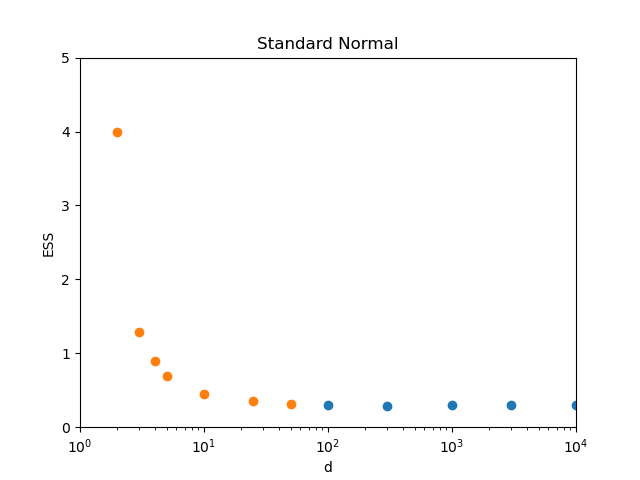Low-Dimensional Case
MCHMC conserves the energy, which in 1D is equal to:
so that
We will take the initial condition \(x(0) = -\infty\) with the proportionality constant equals 1 in the above relation and periodic boundary conditions at infinity. The Hamilton's equation for the velocity gives \(\dot{x} = 1/p(x(t)\), so for \(0 \leq t \leq 1\):
and the general solution is
With some \(\epsilon\) stepsize in time, this is the improved inverse transform sampling1, where a random number generator was replaced by a low-discrepancy sequence2 generator, namely the additive recurrence. As such, it is very efficient and has \(ESS > 1\). This property persists in dimensions \(d = 2\) and \(d = 3\) as is shown in Figure 1 with the standard Gaussian target in various dimensions.
